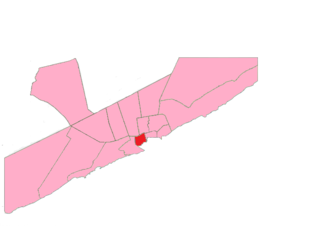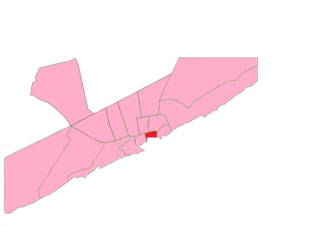Related Research Articles

The Fakr Ad-Din Mosque, also known as Masjid Fakhr Ad-Din, is the second oldest mosque in Somalia after Masjid al-Qiblatayn (Somalia). It is located in Hamar Weyne mogadishu, the oldest part of the city. It is believed to be the 7th oldest mosque in Africa.
The Banaadiri people are a nationality in Somalia. Banaadiris largely inhabit Somalia's southern coastline.

Hamar Weyne District is a district in the southeastern Banaadir region of Somalia. It includes a part of central Mogadishu. Hamar Weyne is the oldest district with in Mogadishu and up until 1938 the city of Mogadishu was made up of Shingani and Hamar Weyne.Somali word "xamar" means tamarind tree.

Shangani District is a district in the southeastern Banaadir region of Somalia. It lies in central Mogadishu. Shingani along with Hamar Weyne are the oldest districts in Mogadishu.

The Arba'a Rukun Mosque, also known as Arba Rucun, is a mosque in the medieval district Shangani, Mogadishu, Somalia.

Xamar Weyne's Friday Mosque is said to be one of the oldest mosques in Mogadishu and in Africa.
Shingani's Friday Mosque is said to be one of the oldest mosques in Mogadishu and in Africa. Historically, Jamacaha Shingani is the most important building in the historical quarter of Shingani.
The Awooto Eeday Mosque is a small mosque located in one of the old historical alleyways of Hamar Weyne in Mogadishu.
The 'Adayga Mosque also known as Aw Musse mosque or Haji Musse mosque is small mosque in the historical Hamar Weyne district in Mogadishu.
Mohamed Al Taani Masjid is a mosque in the medieval Hamar Weyne district of Mogadishu.
Sheikh Rumani Ba 'Alawi Masjid is a small mosque found in the historical Hamar Weyne district in Mogadishu.
The Aw Mukhtar & Aw Sheikh Omar also known as the Twin Mosques is now a large mosque in the historical Hamar Weyne district in Mogadishu.
Haatim are a Somali clan from southern coastal cities of Baraawe, Marka, Kismayo and Mogadishu, they can also be found in the hinterland towns in the inter-riverine are of Somalia and further down the Swahili coast. The Haatim clan are synonymous with the town they first settled in, Baraawe and make up one of the groups part of the "todobo Tol" also known as Bravanese people.
Reer Faqay, also known as Banu Qahtan, is a Somali clan and a Benadiri sub clan. It is primarily found in the southern coastal cities of Mogadishu, Marka, Baraawe and Kismayo. They established communities in the hinterlands in towns such as Afgooye, Baidoa, Diinsoor and Bardheere.
Shanshiyo who goes by the name Shaanshi is a Somali clan, mainly from the southern coastal cities of; Mogadishu, Marka, Baraawe, and Kismayo and have established communities in the hinterlands in towns such as Baidoa and Diinsoor due to trading.
The 12 Koofi, more commonly known as Reer Marka, are a Somali confederation of clans inhabiting the city of Merca and other southern coastal towns of Somalia.
The Reer Manyo are confederacy of clans based in the southern coast of Somalia, primarily in the cities of Mogadishu and Merca and the towns and villages between them.

Sharif Aydarus Sharif Ali Al-Nadheeri or short Sharif Aydarus was a famous scholar of Islamic and Somali history and pan-Islamic leader.
Gaameedle are a Somali clan mainly from the southern coastal cities of; Marka and Mogadishu.
Ba Fadal are a Benadiri clan predominantly based in historic Shingani district of Mogadishu. However, there are established settlements on the road to Merca in the village of 'Number 50'
References
- ↑ Adam, Anita. Benadiri People of Somalia with Particular Reference to the Reer Hamar of Mogadishu. p. 205.
- 1 2 Scikei, Nuredin. Exploring the old Stone of Mogadishu. p. 63.
- ↑ Broberg, Anders (1995). New aspects of the medieval towns of Benadir in southern Somalia. pp. 118–120.
- ↑ Adam, Anita. Benadiri People of Somalia with Particular Reference to the Reer Hamar of Mogadishu. pp. 128–9.
- ↑ 'Aydarus, Sharif (1950). Bughyat al-amal fi tarikh al-sumal. p. 40.

